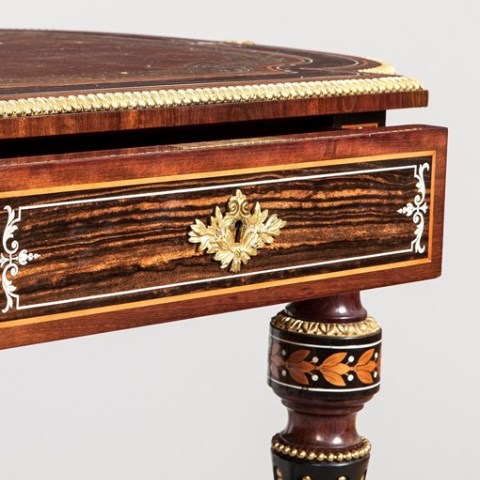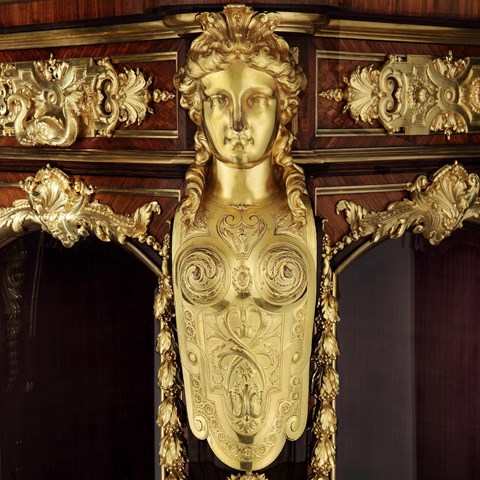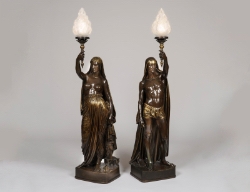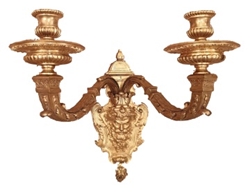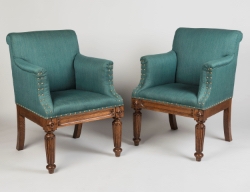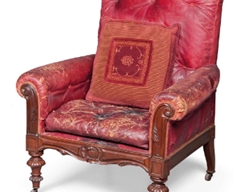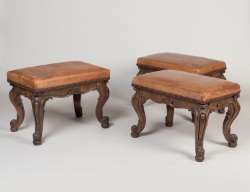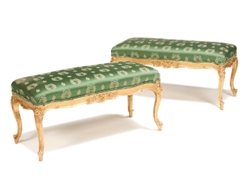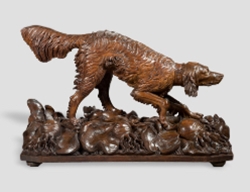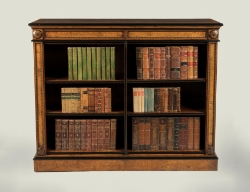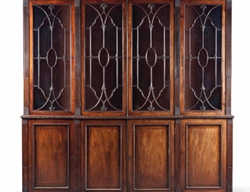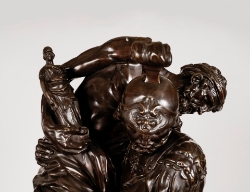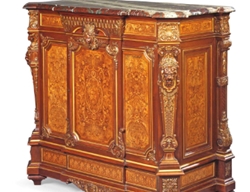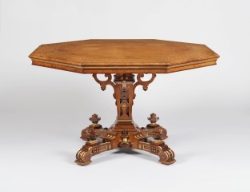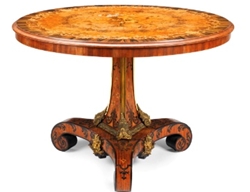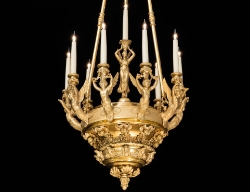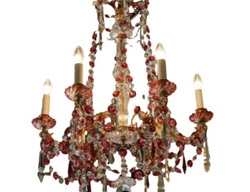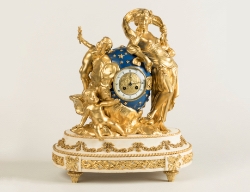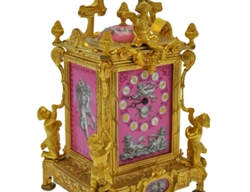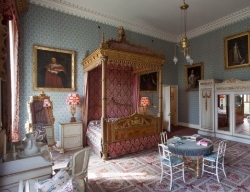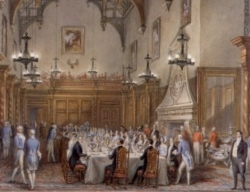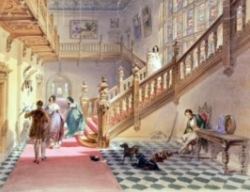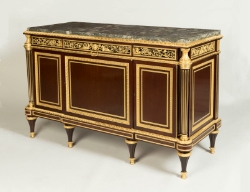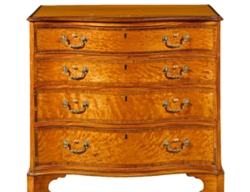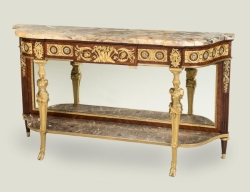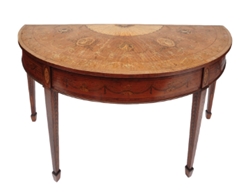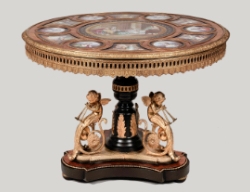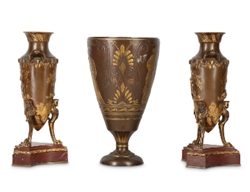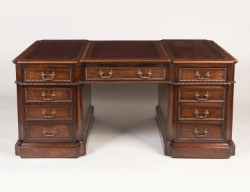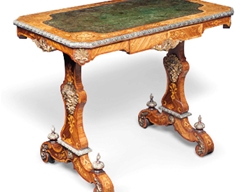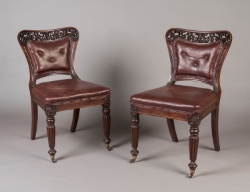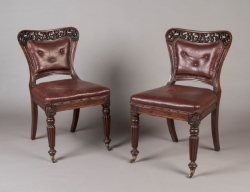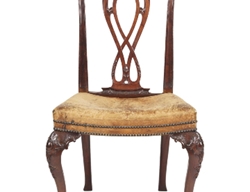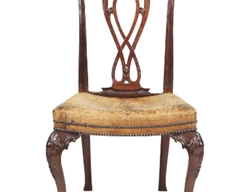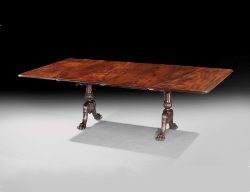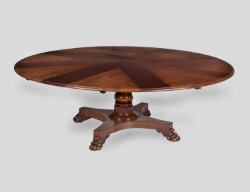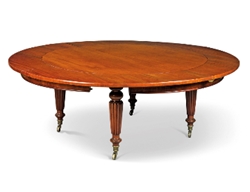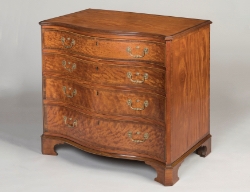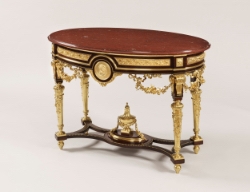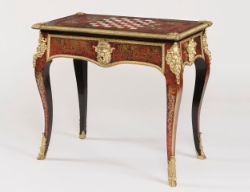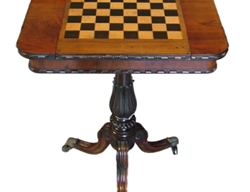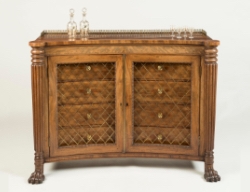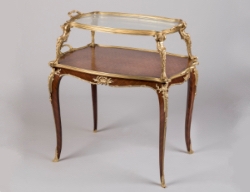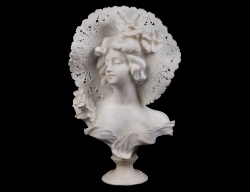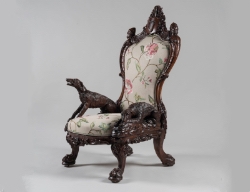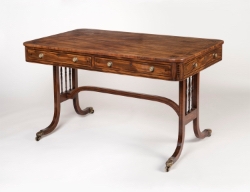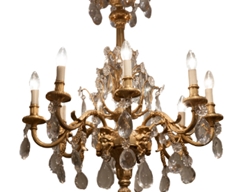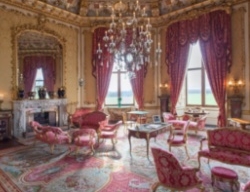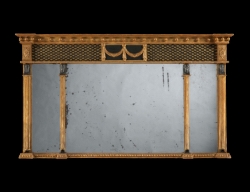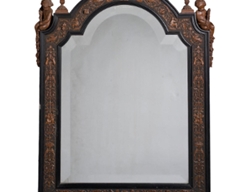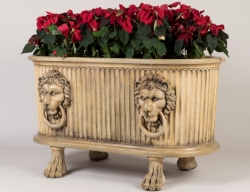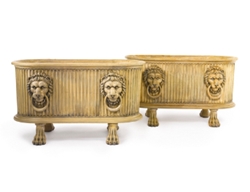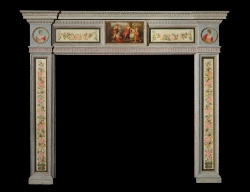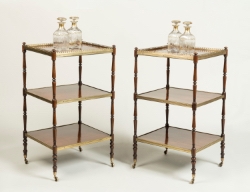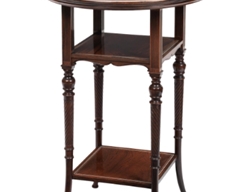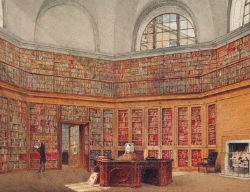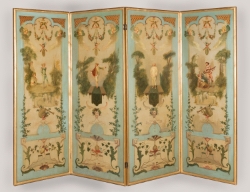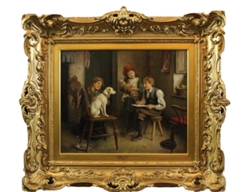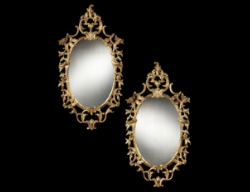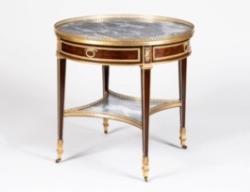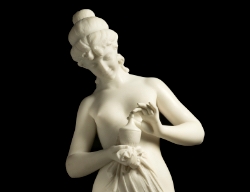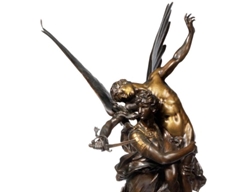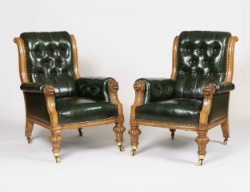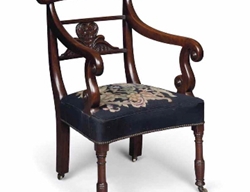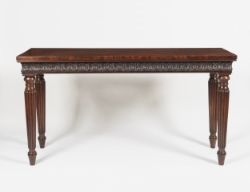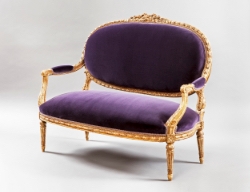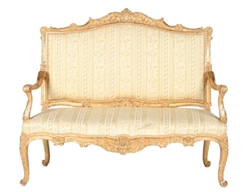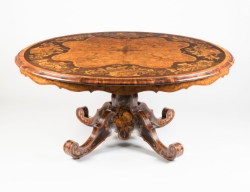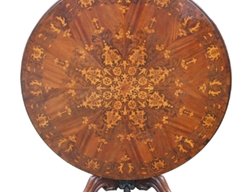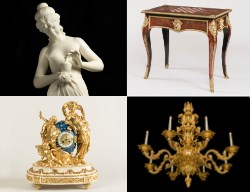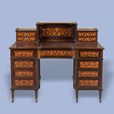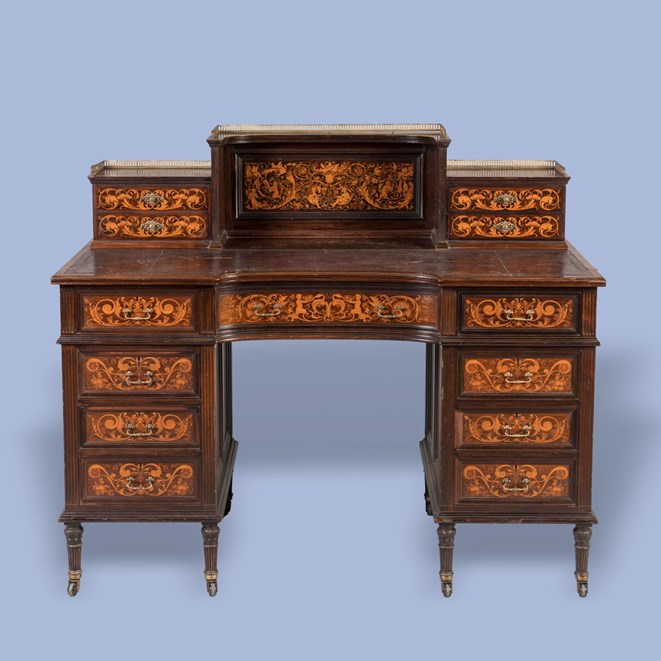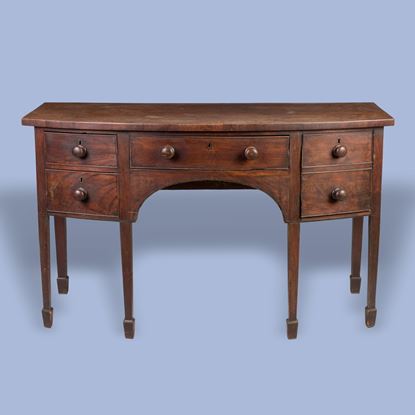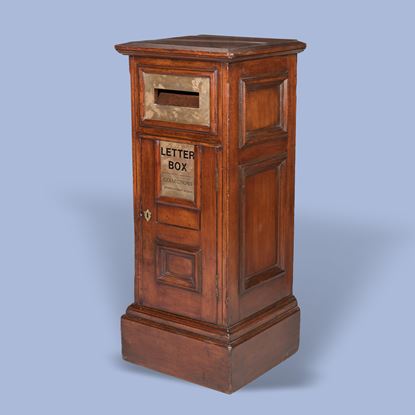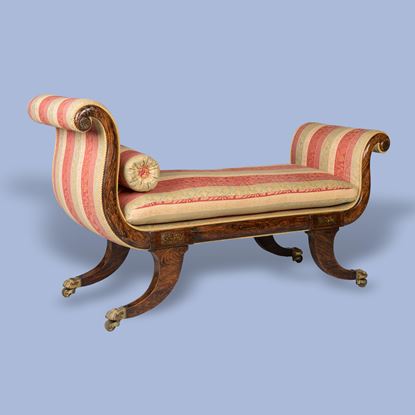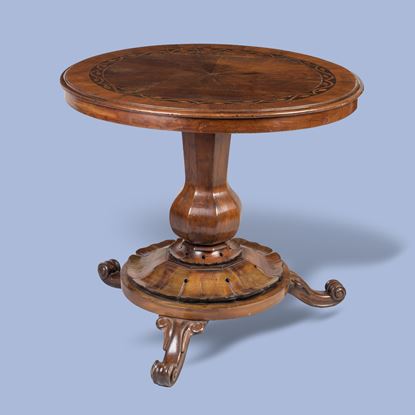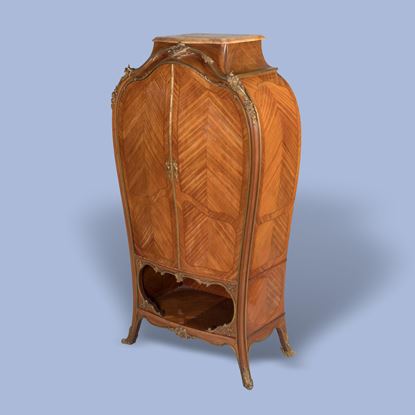0
A Superb Renaissance Revival Marquetry Pedestal Desk By Collinson & Lock
A Superb Renaissance Revival Marquetry Pedestal Desk By Collinson & Lock
Dimensions: H: 42.5 in / 108 cm | W: 50 in / 127 cm | D: 24 in / 61 cm
PRICE: £3,500
0
Original Price: £9,500 | Special Offer: £3,500
Currently in unrestored original condition, please contact us for further information.
A Superb Renaissance Revival Marquetry Pedestal Desk
By Collinson & Lock
Constructed from rosewood, with specimen wood marquetry inlays of the highest standards, the desk supported on fluted legs with castors, both pedestals decorated with marquetry panels in the Renaissance style with floral motifs inhabited by figures engaged in deep thought and reading books, with two banks of four drawers each equally adorned with marquetry; a concave kneehole frieze drawer below the leather writing surface with conforming superstructure incorporating four additional drawers. Stamped “Collinson & Lock LONDON 109.”
English, circa 1885
A closely related pedestal desk, also stamped Collinson & Lock, is discussed in the comprehensive account of the firm’s history by Clive Edwards, alongside a bookcase with identical panels.
Literature:
Edwards Clive. Collinson & Lock : Art Furnishers Interior Decorators and Designers 1870-1900. Matador 2022, p.162 (illus 4.108) & p. 200 (illus. 4.203).
Collinson & Lock
The firm of Collinson & Lock, successors to John Herring, an upholsterer and cabinet maker of Fleet Street, est 1782, was established in London in the third quarter of the 19th century, firstly at their old master's premises, and thereafter at the premises of the recently closed firm of Jackson and Graham. They quickly achieved both commercial success and a leading position in the field of design. In 1871 the firm issued an impressive illustrated catalogue of 'Artistic Furniture', with plates by J. Moyr Smith, assistant to Christopher Dresser, and in 1873 was trading from extensive newly built premises in St Bride Street, designed by T.E. Collcutt, who was retained as an advisor. E.W. Godwin was also employed, between 1872-1874.
The firm continued to produce very high quality items of furniture and soon began to experiment with new materials and designs, becoming especially renowned for their distinctive combinations of rosewood and ivory and their intricate Italianate arabesques, chimeric figures and scrolling foliage. This form of decoration clearly points to the involvement of Stephen Webb, Collinson & Lock's chief designer who was later appointed Professor of Sculpture at the Royal College of Art. The company was merged with Gillows in 1897, just prior to their own merger with S.J. Waring of Liverpool.
You may also like

 Vip access
Vip access

 Favourites
Favourites





